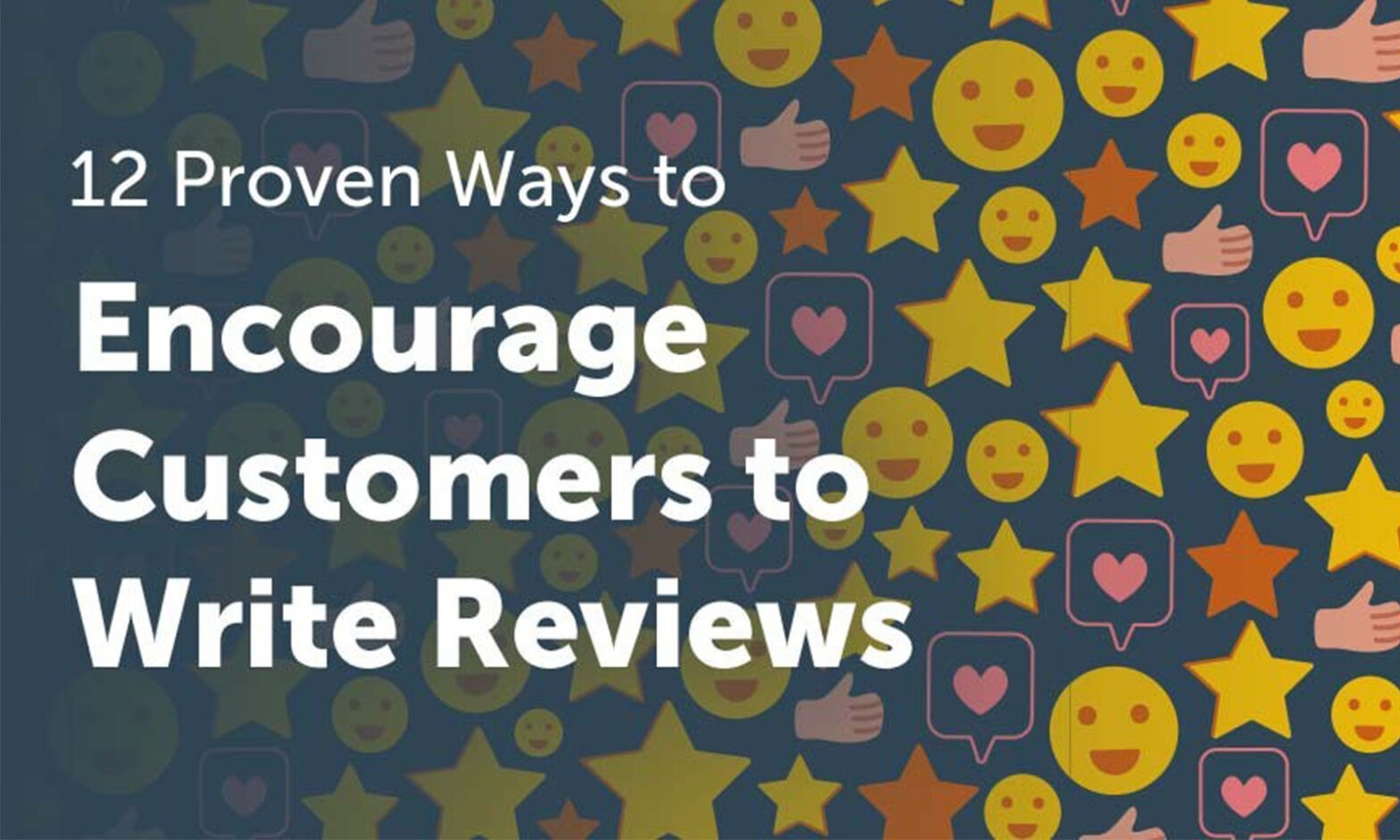Every business owner understands that customer reviews are important – but do you really know just how valuable they can be? You might be surprised to learn just how impactful customer reviews can be, especially in our digitally-driven age.
Online reviews are a powerful tool that you can leverage to achieve an array of goals like gaining new customers, increasing foot traffic, and building a better brand reputation. And beyond that, they can even support higher search rankings, earn you a larger social media following, and so much more.
Simply put, your business needs customer reviews. But exactly what benefits can you look forward to, and perhaps more importantly, how do you get customers to write reviews in the first place? Your V Digital Services team is breaking down everything you need to know about customer reviews for businesses, including why they’re so beneficial and how you can start accumulating them now.
Why Customer Reviews Matter So Much
According to data shared in the Search Engine Journal, reviews have the power to make or break a business:
- More than 90% of consumers reported that positive reviews make them more likely to use a specific business.
- A staggering 82% of consumers check online reviews for local businesses.
- The average consumer spends nearly 14 minutes reading reviews before they make a decision about a business.
- More than 75% of consumers trust online reviews just as much as recommendations provided by their family and friends.
Those numbers paint a pretty clear picture: reviews aren’t just a plus; they’re a necessity.
In addition to increasing your odds of gaining new customers and revenue, there’s also a critical connection between online reviews and search rankings. Your SEO and online reviews are more closely related than you might think, with reviews counting for about 10% of Google’s criteria for SERPs.
Improving SEO is a priority for many business owners, so why not take advantage of the opportunity to accomplish that using reviews?
With online reviews, you can make sure that more of the right people are finding your business at the right time. And then, those same online reviews can contribute to their decision to purchase a product or service from you. That’s two big wins!
Positive vs. negative reviews: Why you need both?
It’s easy to assume that your primary goal should be to collect only positive reviews. After all, no business owner wants the public to have access to an unhappy customer’s negative feedback, right?
But actually, both positive and negative reviews are useful in the long run. Here’s how.
Obviously, when customers leave a glowing review for your business, it is a great way to “show off” all your strengths to potential customers. Satisfied customers serve as a form of proof that you are a business that can be trusted to deliver as promised.
Negative reviews are far less enjoyable to receive, but they are an inevitable part of owning and operating and business. And if you respond appropriately, they can be a chance to paint your business in a positive light.
For example, let’s say you own a donut shop and receive a negative review from a customer that complains that their afternoon dozen were stale. Even though your knee-jerk reaction might be to get defensive, try to instead pause for a moment and put the feedback to good use. Ask yourself if there are any changes you can make that can prevent the issue from reoccurring?
In some cases, there may be easy improvements you can consider; in others, it might simply be a disgruntled customer venting about a problem that doesn’t actually exist. Either way, respond to the negative review politely and professionally. Thank the customer for the feedback, and then provide a succinct explanation of your plan to resolve the issue. That might look something like this: “Sally, thank you for your feedback. We apologize that you were unhappy with your donuts, but we would love to make it right. Please come visit us for a free, freshly-baked donut of your choice – and in the meantime, we’ll take a closer look at our batch timing to make sure our donuts are always fabulously fresh and delicious!”
Negative reviews don’t have to be a blow to your business. Rather, they can allow you to show your commitment to customer satisfaction, your willingness to adapt your approach, and other positive qualities.
Don’t forget to respond to positive reviews as well! Genuine interactions with customers are a wonderful tool for building trust, loyalty, and, as you’ve learned, higher Google rankings.
How to Get Customers to Leave Reviews
With all of this in mind, you might be rethinking your perspective on online review sites like Yelp, Google, and Facebook – or maybe you were already well aware that customers’ online reviews carry a significant amount of weight.
Regardless, there’s no question that building a solid foundation of positive reviews is a top priority.
Let’s talk about how to ask for a review, broken down into three basic steps:
Step 1: Time it properly.
Timing is one of the most critical factors in the review process, no matter how you plan to ask for reviews.
If your request comes too early, customers might be put off that you’re asking for feedback before they’ve even had a chance to decide how they feel about your product or service. Wait too long, and the customer might have forgotten the key details needed for a high-quality review (or they may not be interested in making the effort so long after the fact).
A good rule of thumb is to wait 1-2 days before sending a review request, whether you’re using email campaigns, text messaging, customer review landing pages, or another method. Mornings tend to be the best time frame for higher response rates, so plan accordingly.
Of course, you can also introduce the idea of reviews during your interaction with a customer. In that case, you should still plan to hold off for a couple of days before sending any follow-up.
Step 2: Remember, it’s all in your approach.
Figuring out how to ask for customer reviews is somewhat of a balancing act. On one hand, you want to set up a system that inspires authentic, detailed responses. But at the same time, you don’t want to make the process so complicated that it deters customers.
Aim for a happy medium. You can create a short, fairly simple set of questions that ask for a quick overview of the customer’s experience, as well as the pros and cons they’d like to highlight. The goal is for it to be open-ended enough to motivate the customer to be reasonably detailed without taking up too much of their time.
Step 3: Be persistent.
There’s a fine line between being pushy and giving customers a gentle nudge, and you’ll need to walk it in order to earn as many reviews as possible. If customers don’t respond to your requests for a review, you can send a follow-up a few days after. Be cognizant of your tone in the follow-up, so you don’t overstep.
How to Encourage Customers to Write Reviews: Our Top 12 Tips
We’ve given you a general idea of how to ask for Google reviews, Yelp reviews, and other customer feedback. Now, let’s talk about actionable steps – because that’s what you’ll need to see real results.
Here are a dozen of our best tips for getting customer reviews, all of which are tried and true strategies our marketing team uses regularly.
1. Just ask. (No, really – it can be that easy.)
Often, figuring out how to get more customer reviews can feel like a mystery that’s impossible to solve. But actually, many business owners make it more complicated than it needs to be.
Start by just asking your customers to write reviews – don’t be surprised to discover that many people are happy to share a few positive words about a good experience. Of course, you’ll need to make sure that you’ve already done the work of providing excellent customer service and quality products and/or services.
There are many different ways to request customer reviews, including:
- Include a link to your preferred review platform in the signature of every email you send.
- Reach out to your social media followers with a friendly invitation to leave reviews.
- Create a QR code that connects customers directly with your review page, then add it to your business card, receipt, or another printed material.
2. Set up a process.
There’s a lot to be said to seize every unexpected change to encourage customer reviews. But equally useful is developing a clear process for “the ask” and then making sure you (and any employees) stick to it.
For example, let’s say you are a professional wedding planner. After a client’s big day has come and gone, perhaps you send them a small memento (like a picture frame inscribed with their wedding date) as a thank you gift. You can include a small card that asks for a review in the gift package. This process can serve as a closing act of sorts for every client. Before long, it will be a virtually effortless method that produces a steady flow of reviews.
3. Automate your “ask” wherever possible.
There are so many automation tools you can use to streamline your business operations, including options for automating the process of asking for customer reviews. With review automation, it becomes much easier to stay consistent through even the busiest periods of your business. As your business grows and expands, automated tools make it simple to scale your efforts as needed.
There are various ways to automate the review request process, including:
- Pop-up forms that appear after a customer makes a purchase on your website
- Automatic follow-up emails are sent after a customer completes their shopping experience
- Customer feedback request emails are sent at regular intervals (for example, monthly)
- Online booking systems that feature automated messaging for scheduling future appointments and leaving feedback
4. Concentrate your efforts on satisfied customers.
When a customer makes a positive remark during an interaction, don’t let the opportunity pass you by. It can truly be as simple as thanking them, then asking if they would mind sharing their thoughts in a quick review.
Another way to capitalize on these opportunities is by utilizing customer surveys. When a customer positively responds to a brief survey, you can then invite them to write a more detailed review.
Surveys can also let you turn an unhappy customer into one that has nothing but great things to say about your business. If there’s a customer who answers your survey with less-than-thrilled feedback, make an effort to ask how you can improve their experience. Take action whenever possible, going above and beyond to show that you’re determined to do better. Then, if the customer is pleased by the results, encourage them to leave a review.
5. Add a personalized touch.
Automation can be a handy tool, but you also don’t want to make your customers feel like they’re just another face in the crowd. Find ways to personalize the ask, and you’re likely to see your success rate climb. And as an added bonus, you’ll be building stronger, more lasting relationships with your customers.
Personalization can take many different forms, largely depending on the type of business you run. For example, a wealth management firm that has developed deep connections with its clients might make a personal phone call to ask for a review.
6. Communicate why reviews matter so much.
Many customers might not realize why reviews are so important, so educating them can make a big difference in their willingness to provide feedback. Explain that reviews help your business connect with customers just like them, specifically those who are searching for a quality experience – which you’ve just proved you are capable of providing.
A customer is more apt to take action once they understand that reviews don’t just help your business but are actually incredibly beneficial for their fellow consumers.
7. Make the review process hassle-free.
You’re a business owner, but you’re also a consumer – so you already know that an overcomplicated review is one you’re unlikely to complete. One of the fastest ways to lose reviews is by expecting customers to spend too much time or energy on the process. Your goal should be to get rid of any possible friction points that would discourage your customers.
So, this means you’ll need to take a hard look at your process through the eyes of a customer. How can you streamline it? Here are a few suggestions:
- When you send a review request (email, text, or another medium), a link should take the customer directly to the platform or fillable form. Under no circumstances should the customer navigate the platform and then find your business.
- Keep your requests short and to the point while still expressing your appreciation. Avoid too much “fluff” so that you don’t lose customers’ interest before getting that click.
- If possible, find a review service that allows customers to skip the step of signing up for an account on your platform of choice.
8. Provide an easy-to-use template to guide reviewers.
Given the choice between writing an entire review from scratch or working from a helpful template, what are you most likely to choose? If you can develop a template that outlines exactly what you’d like the review to contain, it takes a lot of the guesswork out of the process for your customers.
For example, your review request form can include a few ideas to get the customer started:
Thank you so much for choosing Clarkdale Designs for your home renovation project. We would appreciate your feedback on your experience so that we can continue to provide the very best in interior design and remodeling services!
How did your personal design team go above and beyond to meet your needs?
When did you realize you had made the right decision in working with us?
How would you describe the experience to a friend?
A template can be advantageous in more ways than one. As you can see, the example above makes it much easier for the customer to share detailed feedback without having to think too hard. But in addition, it gently guides the customer to provide answers that will make for an outstanding review.
9. Actively engage with new and existing reviews.
When customers see a business interact with online reviews, writing and submitting their own feedback can be a major motivator. Regardless of whether you’re responding to positive or negative reviews, expressing your appreciation can go a long way. And when you show that you aren’t just skimming over reviews but actually absorbing the feedback, that can be even more encouraging to customers.
In addition to responding to each individual review, another way to demonstrate your engagement is to share some reviews via social media. You might pull a few sentences to use as a quote for a single post or even collect several pieces of positive feedback centered on a specific product or service.
Customers want to know that the time and effort required for writing a review will be appreciated. More than likely, you genuinely are grateful for customer feedback – you just need to be sure to actually show it.
10. Offer an incentive to sweeten the deal.
Providing an incentive to reward reviewers does not mean bribing customers for good reviews. It’s important that you carefully consider your approach to this tactic so that you don’t come off as unethical in any way.
Simply state that you’re offering an incentive as a “thank you” for customers that choose to write a review for your business without putting pressure on the customer to say only positive things. You can certainly say something like, “Did you have a great experience with one of our team members? We would love to hear about it! Take a few moments to write a review, and we’ll send you a 15% off coupon to say thanks!”
Some ideas for customer incentives for reviews are:
- Discounts
- Store credits
- Account upgrades
- Free product or service
- Charitable donation made on their behalf
- Publicity via a social media share
- Free content, such as an ebook relevant to the products/services you provide
11. Use review request emails, but with impeccable timing.
We already discussed the general guidelines for when to send review requests so that you can use that as a starting point. But in terms of the big picture, when is the best time to ask for a review?
For the most part, your timing is going to depend largely on the type of business you have, as well as the sort of products and/or services you offer. If you are a personal fitness trainer and nutrition coach, you probably aren’t going to ask for feedback after a client’s first week of working with you. Rather, you would have much better luck timing your request after achieving a major milestone or successfully completing a full program.
When it comes to product reviews, try to reach out to the customer while you’re still fresh in their mind and they’ve had ample time to actually use the product in question. The type of product will affect this timeframe, so take that into consideration.
Service reviews are typically best requested at the completion of the service. So, once you wrap up the project or job, you can ask for the review as a part of the payment process. Or, if you work with customers on an ongoing basis, use key milestones as a “trigger event” for a review request.
12. Don’t forget to follow up.
Our last tip is also one of the most important and one that many businesses don’t use. Asking for reviews can be slightly awkward (at least at first), largely because many business owners perceive it as a “bother” to their customers. So, the prospect of following up and asking again is something that plenty of business owners would rather just avoid.
But remember, you’ve already set up a system that makes it easy, fast, and possibly even rewarding for your customers to write a review. It’s true that they are being extremely helpful and generous in submitting a review, but you’ve been very careful to take a friendly, non-pushy approach to begin with. That means that if you don’t receive a response after a certain period of time, you can feel completely comfortable sending a gentle reminder.
We all have things on our to-do lists that we forget about or put off until later, and your customers are no different. So, a subtle nudge might just be what they need to get it done.
Build a Five-Star Digital Marketing Strategy with V Digital Services
If you had to review your own approach to digital marketing, how many stars would you give it? Unless you can confidently say that you’re achieving next-level results with a fantastic marketing plan, it’s probably time to make a change.
V Digital Services is here to serve as your experienced partner in online marketing, helping you tackle everything from your digital reputation and social media to paid advertising and content creation. Our team can provide as much (or as little) support as you need to begin seeing measurable progress towards your business goals. And because every business is unique, we take a strategic approach to tailoring our tactics according to your needs.
Customer reviews can be an invaluable asset for your business, but there’s also so much more that goes into mastering marketing in the digital landscape. Learn more about how to use online advertising to your advantage when you connect with the V Digital Services team today!
Image Source: sunniwa , Victoruler , Roman Samborskyi , chainarong06 , Black Salmon / Shutterstock





 Customer Reviews
Customer Reviews PREVIOUS
PREVIOUS
Very grateful to you for this kinds of blog.